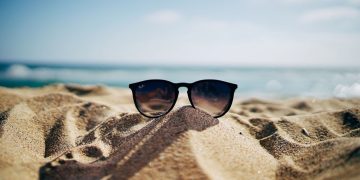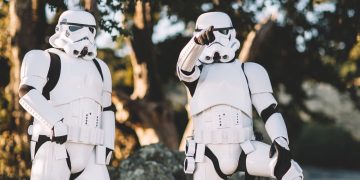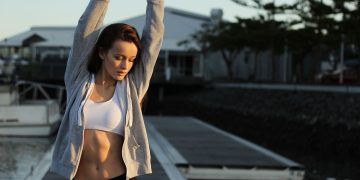At 1 minute and 30 seconds into the 30-minute immersive documentary Tour De Force a fleet of MotoGP bikes races off their starting positions.
It’s a chill-inducing moment trackside witnessing unthinkable acceleration on a rainy day in France. You’ve just never seen speed presented this way before. The closest comparison would be standing on the grid for the start of a Tron light cycle race. In Apple Vision Pro VR, the moment is both breath-taking and a compelling hook into the rest of this carefully paced sports documentary.
First Of Its Kind Immersive Sports Documentary
Tour De Force is a new kind of sports documentary project filmed on four Blackmagic URSA Cine Immersive cameras capturing in the Apple Immersive format, meaning each hulking dual-lens system is capturing 180-degree stereoscopic VR to Apple specifications.
The film follows rider Johann Zarco through a dangerous day in the rain during the French Grand Prix at Le Mans this year. Apple notes that for this project, filmmakers deployed an Apple Vision Pro headset trackside to review footage immediately and “ensure accurate framing in context.”
The label “first of its kind” can be applied to a lot of stereoscopic projects going back decades. I use it here because wearing a standalone VR headset to immediately review camera footage in a tight editing flow seems to have aided the filmmakers substantially here in the efficiency and impact of their storytelling.
Previous standout releases in the Apple format include the scripted film Submerged and a carefully produced view of a rocking Metallica concert. Here in France, the gray clouds overhead pose as much a threat to the filmmaking efforts as to Zarco’s tire choice as he hurtles down stretches at hundreds of kilometers per hour. So maybe that’s why, even if the camera is carried on a Steadicam, our first moment on the track feels a little wobbly as we approach Zarco amid some 300,000 fans.
The filmmakers are just setting up the stakes. Other cameras are on pedestals and rock solid to the ground, including that exhilarating moment on the starting line I found so powerful I rewound for a second wave of chills.
One notable feature in Tour De Force is that liquids hit the lenses at various times. Most of the time it is just a drop or two of rain in one eye, but at one point near the end of the film you’re essentially awash in liquid. The rain could’ve rendered unwatchable all the footage shot that day. Instead, a drop hits you on the head as if to say — “oh no, the race just got more dangerous”. Did I just witness the baptism of 180-degree VR video?
I knew absolutely nothing about MotoGP racing before I watched Tour De Force. Now I’m a fan of a French motorcycle rider named Johann Zarco. I’ve never seen him on TV, never read about him in a news article, never heard about him on the radio, and nobody has ever spoken to me about him. But now I feel like I know him a little bit because I watched him in VR do a backflip off a motorcycle and land on his feet on the ground. I watched him do that early in this documentary, front and center, and then a little while later I watched him backflip again, this time off a trackside barrier in front of adoring fans.
Tour De Force is a fantastic way to spend half an hour in VR. For filmmakers, it is a breakthrough demonstration of Blackmagic’s cameras in these kinds of scenarios for immersive storytelling. Shots near the end of this project feature Zarco crossing a walkway in the distance, people in the foreground waving up at him. The sense of layered depth creates a vivid memory, complementing that moment when the race begins. Earlier Apple Immersive projects have been exploratory and enjoyable, but Tour De Force starts to add new vocabulary to the language of cinema in truly high fidelity 3D.
It’s available to Apple Vision Pro users in France with a Canal+ subscription and in the Apple TV app elsewhere.
Source link
#MotoGP #Tour #Force #Places #Trackside #Apple #Immersive #Blackmagic #Cameras






























